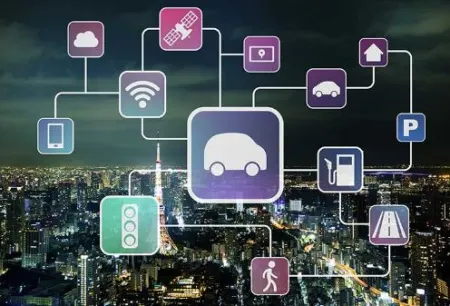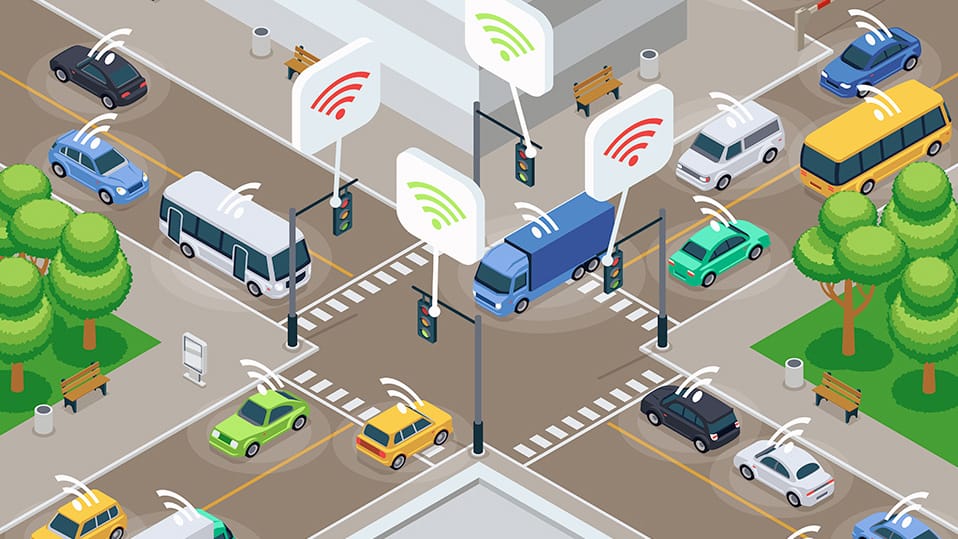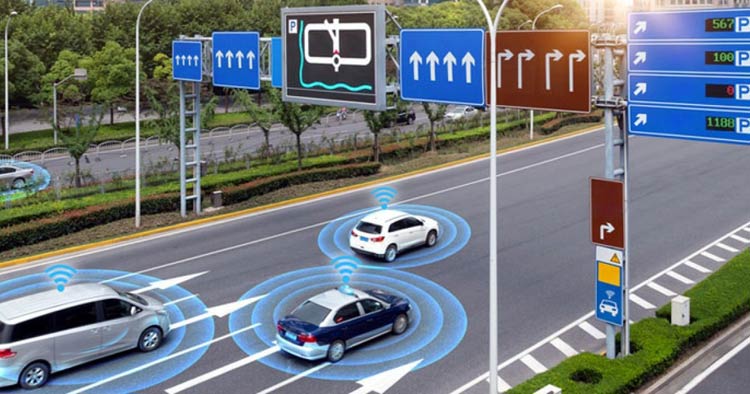In what ways is modern technology fostering expansion in the worldwide transportation industry?
Improvements in smart transport infrastructures, methodologies, tactics, and technologies have been bolstered in recent years by the rapid pace of technology progress and the rise of smart cities paradigms. Opportunities and challenges for growing cities to move toward a more sustainable future are created by innovative transportation technologies. Despite widespread interest in the concept, not enough has been established to provide a solid framework for assessing the smart transport system. Experts agree that it is extremely difficult to create a toolkit that is suitable for both practitioners and academics, which poses a significant challenge when constructing transport investments and interventions. The growth of smart transportation that is actually useful requires cutting-edge, value-added technology and transparent, accountable leadership.
It is not only an idea for the future; already, it is being put into practice in many places throughout the globe. New York, one of the busiest cities in the world, has embraced smart mobility in their rapidly developing smart city. Despite this, rural Wyoming has become a center for linked vehicles because it is a major freight route. Experts agree that autonomous transportation of commodities has the potential to vastly improve the efficiency of the supply chain while simultaneously reducing the demand for long-haul drivers.
Growth of Smart Transportation
Markets & Markets predicts that the value of the global smart transportation market will increase from $94 billion in 2020 to $156 billion by the end of 2025, representing a compound annual growth rate (CAGR) of 10.6 percent throughout the forecast period. But a report from Data Bridge, a market research agency, predicts the very same market will expand by 14.6% between 2021 and 2028. It is hypothesized that the need for efficient management systems will be triggered by the current inefficient transportation infrastructure and the increasing number of vehicles operating on the roads. In addition, robust government incentives and initiatives, and efficient management of existing transportation, would boost the development of this industry.
It’s important to understand what’s pushing the smart transportation sector upward. It’s the worldwide increase in both traffic infrastructure and urban population. Intelligent Transportation Systems (ITS) rely heavily on technology, which is why numerous government programs and private-public partnerships (PPPs) have been launched in recent years to boost ITS efficiency. The expansion of analytics’ use and the concomitant development of new technologies to enhance the customer experience are further factors driving this market’s expansion.

Experts say that increasing road safety measures for pedestrians, drivers, and passengers and decreasing the frequency of accidents is necessary to boost its growth in the next years. Advanced radar and in-pavement warning lights are standard on highways in developed nations today, giving drivers the best possible advance notice of potential hazards. The U.S. Department of Transportation (DOT) is developing innovative strategies, such as smart metering, to reduce traffic congestion.
Senior research analyst and techArc founder Faisal Kawoosa has claimed that, by 2020’s end, Europe will have the largest market share in the ITS industry due to the continent’s reputation as a leader in both technological innovation and infrastructure development. The European Commission has declared that it will invest USD 13 billion in this area through the Connecting Europe Facility (CEF), with the intention of funding at least 276 transportation projects. The smart European rail network is also expected to benefit from these investments, which will improve traffic and urban transport infrastructure in the UK and France. Countries in the European Union (EU) that are supported by its social and trade agreements have helped increase passenger traffic in Europe, and as a result, developed western European countries like Germany, the United Kingdom, and France are using the top-notch smart transportation technologies.
Global Challenges of Smart Transportation
Smart cities must provide smart transportation solutions if they are to achieve sustainability goals and spur innovation. These challenges arise from the rapid morphing of urban mobility’s landscape, as seen through the eyes of a savvy city planner. To combat sustainability issues, air quality concerns, and traffic congestion, as well as to design a secure, effective, and safe public transportation system with mobility-as-a-service (MaaS) and other podiums, public-private partnerships (PPPs) and amalgamation with knowledge institutions are urgently needed.
The smart transportation industry incorporates a wide variety of technological factors, including networks, software, hardware, and many suppliers. Integration of smart technology elements with existing transportation systems is difficult because of protocol difficulties and a lack of an open interface. There may be a breakdown in communication between modern systems supported by technology and older systems, and substantial resources will be needed to upgrade the legacy systems, all because of integration problems. It is expected that these obstacles will slow the development of this sector.
For techArc’s founder Faisal Kawoosa, “integrating with the existing infrastructure” was the main obstacle he foresaw while speaking to CircuitDigest. In India, for example, over 90% of smart transportation requires infrastructure renovation; this means that the country would have to undertake several brownfield projects, which are not only costly but also logistically challenging. As an example, we think back to when Delhi had a bus rapid transit system (BRT). Although it may not boost ridership on public transportation, it will bring several benefits such as better utilization of existing infrastructure and lower operational expenses. Many people in the NCR area use it as an alternative to the metro. However, the challenge will be in rapidly upgrading infrastructure to meet the needs.
The most prominent application of automation is smart mobility, which provides users with real-time updates on traffic conditions and alternative route ideas via services like Google Maps in the event of gridlock. Cyber security assaults are a major concern because of the industry’s heavy reliance on digital technology. The cybercriminals might launch an assault on the city’s control and signaling systems, not just its information technology. They are responsible for attacks on the internet and transportation disruptions.
Role of Technology in Smart Transportation Systems
Top-tier technology, such as sensors, data connectivity, the cloud, and mobility, are essential to the smooth rollout of smart transportation. Rapid progress in these fields in recent years has paved the way for a more intelligent ecosystem by increasing the number of things that can communicate with one another. For instance, the release of Internet Protocol version 6 (IPv6) facilitates the connectivity of nearly all devices to the internet, providing a deeper insight into consumer habits for better decision-making. Rail and road traffic management systems, rail operations management systems, incident management systems, travel assistance systems, and toll collecting systems are just some of the solutions and applications that have benefited from the advent of high-performance networking technologies. Control gadgets and smart networking are set to become more autonomous and perceptive as technology advances. By leveraging cloud computing, smart transportation may aggregate data from numerous sources and make it available to one command hub. From a technological perspective, smart transportation initiatives will benefit most from the rising interest in and use of machine learning/data analytics, the internet of things (IoT), and cybersecurity during the next five years.

Adding radar, cameras, computer vision, lidar, and AI-integrated sensors to vehicles and roads is another form of intelligent transportation. The collected data helps the transportation department provide riders with advance alerts about hazards like potholes, weather, pedestrian placements, and slippery places.
Another important technology that is greatly influencing the development of smart cities and the transportation industry is the Internet of Things (IoT). One example is the positive effect on revenue generation that can result from using this technology to design a network that can be managed centrally and thus find safer and better routes in the event of an emergency, effectively maintain and manage the goods, optimize or measure the distance covered by each vehicle, and so on. Security, cost reduction, safety, and advancements in operational efficacy are among the most significant benefits of IoT in the transportation sector. With the use of IoT, utilities like cameras and traffic signals will pave the way for a smart management system, which in turn will alter how people interact with and use vehicles.








